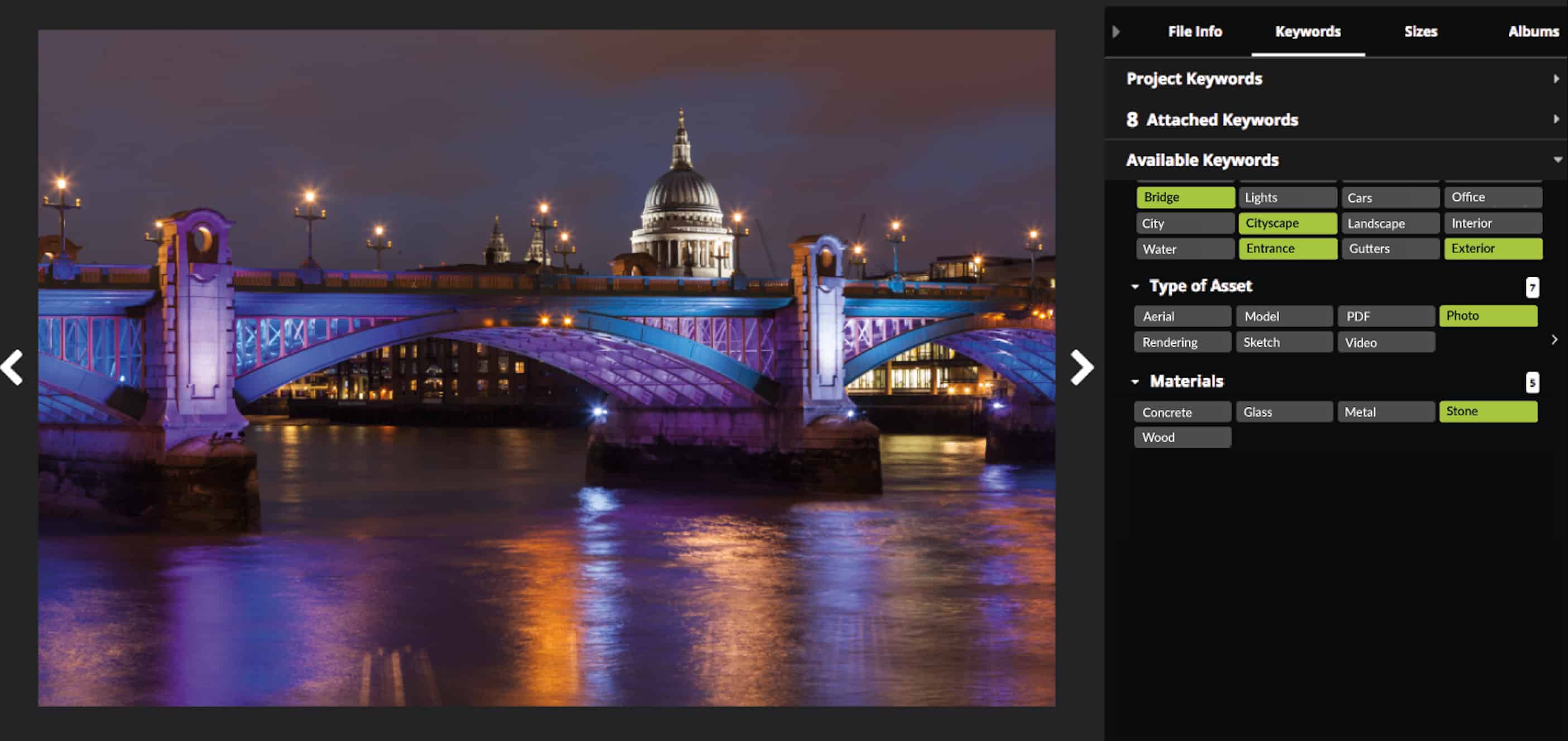One of the most important objectives for Marketers is to create compelling content in order to maintain and increase the brand awareness and recognition for a firm. Within AEC and Real Estate companies, as well as other sectors, it is is essential for Marketers to have a creative eye to choose the best content out of an abundance of images so they can put forwards the best photos for their projects. However, in order to create powerful content the Marketers must have the right tools.
Digital Assets are growing across firms as visual content is forty times more likely to be shared on social media than other types of content (Buffer, 2014). It was also found by researchers that articles with an image after every 75-100 words would receive double the number of shares. Due to the need for high quality images, videos, gifs and infographics increasing, a traditional storage solution may no longer be suitable with a growing digital asset library.
A Digital Asset Management system (DAM) is a tool which focuses on the requirements of all departments but it is particularly useful for marketers, creatives and those who are in charge of the visuals for their firm. A Cloud based DAM is a portal which manages your digital assets by securely storing them, organising them through keyword tagging and some also offer distribution and editing options. A Digital Asset Management system recognises the need for consistency, which is why a DAM can help marketers build a strong brand portfolio by keeping the digital assets and brand guidelines in sync amongst the teams across the firm.
There are a various DAM’s available, all catering for different needs of an SMB or large multi office firms in different sectors of business. Marketers need to consider the requirements of the firm when choosing a DAM. For example as the AEC and Real Estate sectors work by projects, it would be ideal for a project-based DAM to be implemented such as OpenAsset. A project based DAM has an array of features like other DAM’s however it is better suited to the AEC & Real Estate sector as projects can be uploaded using the project name and be tagged using the project keywords which help define the image. Overall, these features create a simplified search process for images.
We understand that content creation takes time to perfect, this is why a Digital Asset Management system is tailored around making workflows more efficient which supports marketing to enhance customer experiences as well as saving time across the board. There are various features incorporated into a DAM which are particularly beneficial to marketers as well as other teams across the organisation, here are some of the DAM features teams using OpenAsset can’t live without:
- Access Permissions – Quite often the marketing team are responsible for approving and distributing images which can become challenging at times. With OpenAsset, a traffic light system is used which allows admins to select access levels for the team. This creates an efficient workflow and it reduces the risk of colleagues in other departments accessing unverified images or out of date files. For example, Marketing can allow the sales team to only access the approved image files whilst Marketing have access to all the images.
- Keyword Tagging – Keyword tagging on OpenAsset has been simplified for effortless use, users can tag their project assets with keywords which are linked to an individual image. Keywords such as the location and type of material can be used when uploading images and this allows users to find a specific image or image type with ease.

- InDesign Plugin – Creating collateral on InDesign may require image downloads from cloud based software such as WeTransfer or Google Drive. However, with a DAM integrated with InDesign such as OpenAsset users can open up their desired images straight from their DAM and onto InDesign. This means that users can save time by avoiding unnecessary downloads onto their desktop and keeping their system clutter free.
- Templates – Templates may get lost on your local drive or colleagues may still have old templates saved on their desktop which could lead to inconsistencies in your marketing collateral. A DAM which integrates your branded templates will allow all teams across the firm to create collateral with ease and without any worry of using an outdated template. Preset templates can also assist with a rebranding process.
- Automatic Resizing – Resizing individual images manually can delay the content producing process as there are various sizes required for images posted on social media which may not be the same sizes for the website or printed collateral. A DAM which has incorporated the automatic image resizing option will save you time when creating content for your varied marketing channels. During the the DAM onboarding process, users can input all the varied sizes they require for their images and these sizes will be applied to each project when it is uploaded onto the system.
Although all Digital Asset Management systems are an investment which focus on increasing efficiency and saving time, a project based DAM such as OpenAsset is an ideal tool for marketers in the AEC and Real Estate sector. OpenAsset assists marketers to collaborate effectively with other colleagues to achieve their targets and maintain the consistency of their brand portfolio.



